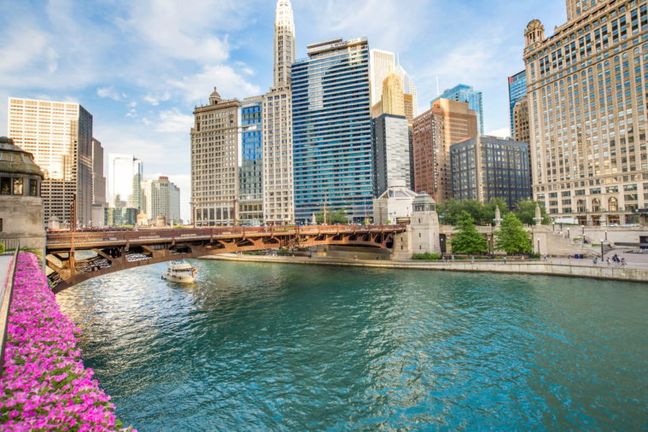Most “standard” sets of interrogatories directed at a plaintiff seek information concerning the existence of any social media platforms such as Facebook, Instagram/Finsta, Twitter, and Snapchat. Assuming the existence of one or more of these accounts, unless and until the plaintiff’s counsel instructs their client to stop posting on these account(s), often times the plaintiff will continue posting photographs and “updates” recounting their recent activities. In this regard, a preservation letter and/or order requiring the plaintiff to preserve any photographs and postings is good practice and may reveal certain “nuggets” of information that can be used by the defense during discovery and trial to cross-examine/impeach the plaintiff, or perhaps help establish the plaintiff is otherwise doing well under their individual circumstances. This article will address a snapshot of certain admissibility factors routinely encountered when dealing with social media content and evidence in Illinois.
An injured plaintiff, even if they are temporarily or permanently unable to return to work, may post photos on social media of themselves engaging in a favorite pastime, activity or hobby. Armed with this knowledge, the defense attorney will have certain information to attempt to diffuse the damages being sought for loss of enjoyment of a normal life. Additionally, if the defense is able discover old Facebook postings – for example, the plaintiff enjoyed attending the Cubs’ games at Wrigley Field – assuming plaintiff is still physically capable of attending games, perhaps asking the jury to award an amount of damages to allow the plaintiff and his wife to buy season tickets may be construed as a reasonable and generous concession by the defense attorney. This can serve to make her look like the most reasonable person in the room and can help minimize any potential verdict.
Lawyers at Tyson & Mendes routinely seek information from plaintiffs during fact discovery regarding what brings the plaintiff joy and satisfaction in his or her life, outside of work. Many times this information can be gleaned from reviewing plaintiff’s social media sites. This background information can help prepare the proper response to plaintiff’s claims for non-economic damages.
Take for instance the hypothetical case of a mailman who lost an arm in an accident and can not return to his prior role of delivering mail. The plaintiff’s economist has offered the opinion during expert discovery that the present cash value of current and future lost earnings is $750,000. Plaintiff’s counsel has already disclosed the past, present, and future medical bills total $250,000. Therefore, defense counsel knows going into trial plaintiff’s counsel will be “blackboarding” $1 million in economic damages. Without having a full understanding of the “intangibles” (non-economic damages), defense counsel might be surprised to hear plaintiff’s counsel make the following opening statement to the jury:
Ladies and gentlemen, my client lost his arm due to the negligence of the defendant, and as a result, he cannot return to his prior job as a mail carrier. We will prove he is entitled to an award of $1 million to compensate him for his lost income and medical bills. Mr. Smith loved being a mail carrier, and the defendant took his livelihood from him. This is only a small portion of his claim. Even more importantly, the defendant took away Mr. Smith’s ability to engage in his true passion–riding his motorcycle. Before the accident every summer Mr. Smith and his wife would go on a month-long ride across the country to reconnect and spend uninterrupted time together. Because of his injuries, Mr. Smith had to sell his motorcycle and he will never again feel the closeness of his wife’s arms around his waist, and the exhilaration of the wind against his chest as they cruise on the motorcycle down Route 66 together. This portion of Mr. Smith’s life has come to an untimely end solely due to defendant’s negligence. For this permanent loss of enjoyment of life, we will be asking you for an award of $5 million in addition to the $1 million in lost wages and medical bills.”
Now what if through various social media postings of the plaintiffs and their Facebook “friends” defense counsel discovered that with the proceeds of the sale of the motorcycle, Mr. Smith bought a small RV, and he and his wife continued their cross-county summer trips on Route 66, where they were still able to spend uninterrupted time reconnecting? There are pictures and story-line updates showing Mr. and Mrs. Smith enjoying time at restaurants, bars, campgrounds, and antique shopping just like they did before the accident. Instead of traveling on 2 wheels, they got to their planned destination on four wheels. How does defense counsel introduce this evidence at trial?
Authenticating electronically stored information (ESI) such as printouts of Facebook communications presents special challenges. Illinois has adopted the Federal Rules of Evidence. The Illinois and Federal Rules of Evidence apply to ESI in the form of emails, text messages, tweets, Facebook posts, and other forms of social media, in the same manner as they do to other pieces of evidence. In order for ESI to be admissible: (1) it must be relevant, (2) its probative value must outweigh its prejudicial effect, (3) it must not be barred as a hearsay document , and (4) it must be able to be authenticated as an original or duplicate, or admissible as secondary evidence to prove its contents. In summary, the social media communications must satisfy Federal Rules of Evidence 401, 403, 803, and 901(a). United States v. Jackson, 208 F.3d 633, 637-38 (7th Cir. 2000).
Relevance
“Relevant evidence” means evidence having any tendency to make the existence of any fact that is of consequence to the determination of the action more probable or less probable than it would be without the evidence. Il. R. Evid Rule 401.
Probative Value
Although relevant, evidence may be excluded if its probative value is substantially outweighed by the danger of unfair prejudice, confusion of the issues, or misleading the jury, or by considerations of undue delay, waste of time, or needless presentation of cumulative evidence. Il. R. Evid Rule 403.
Hearsay
A witness statement through social media may be considered hearsay, but could be admissible under one of the many hearsay exceptions. For example, an admission by a party opponent could be admitted under Rule 801(d)(2) or a present sense impression of a witness may be admissible under Rule 803(1).
A statement of the declarant’s then existing state of mind, emotion, sensation, or physical condition (such as intent, plan, motive, design, mental feeling, pain, and bodily health), but not including: (A) a statement of memory or belief to prove the fact remembered or believed unless it relates to the execution, revocation, identification, or terms of declarant’s will; or (B) a statement of declarant’s then existing state of mind, emotion, sensation, or physical condition to prove the state of mind, emotion, sensation, or physical condition of another declarant at that time or at any other time when such state of the other declarant is an issue in the action. Il. R. Evid Rule 803(3).
Authentication
The requirement of authentication or identification as a condition precedent to admissibility is satisfied by evidence sufficient to support a finding that the matter in question is what its proponent claims. (See, People v. Chromik, 408 Ill. App. 3d 1028 (3rd Dist. 2011) for a discussion on admissibility of text messages and Il. R. Evid Rule 901(a)). The question of authenticity is a preliminary determination by the trial judge pursuant to Illinois Rule of Evidence 104(b).
The most obvious method of authentication would be to ask the purported creator if she indeed created the profile and also if she added the posting in question. What if the witness who you think created the post is either unavailable or won’t admit to the authenticity of the post? In this scenario the attorney seeking admission of the post will have to turn to “circumstantial authentication.” Rule 901(b)(4) permits exhibits to be authenticated or identified by “[a]ppearance, contents, substance, internal patterns, or other distinctive characteristics, taken in conjunction with circumstances.” The commentary to Rule 901(b)(4) states “[t]he characteristics of the offered item itself, considered in the light of circumstances, afford authentication techniques in great variety.”
Based upon the court’s recent holdings in People v. Maya, 88 N.E.3d 10, 30 (2017) and People v. Curry, 2020Il App (2d) 180148 (September 10, 2020), Illinois courts are willing to consider Facebook records as self-authenticating, but still must be deemed relevant.
Conclusion
Investigation into a plaintiff’s social media platform(s) provides an excellent opportunity to learn more about the plaintiff’s background and credibility, which can lead to the subsequent discovery of mitigating factors and issues that can be used for impeachment purposes at trial. Not everything discovered on social media will be admissible into evidence. For example, the Facebook posting may be properly authenticated, but the content may be of a collateral matter and therefore not deemed relevant. While it is possible to get social media information into evidence, it requires strategy and forethought.
Numerous third-party vendors specialize in conducting social media searches of individual’s accounts and can generate reports on the postings and photographs. Once in possession of these materials during discovery, defense counsel can serve a Rule 216 (b) Request for Admission of Genuineness of Document upon plaintiff to properly authenticate the document. While even an admission as to the genuineness of the document does not guarantee its admissibility at trial, it can serve as substantial leverage against plaintiff in bringing them to the negotiating table to work out a fair resolution to the controversy in advance of trial.

 Author: Mark Shanberg
Author: Mark Shanberg
 Cannabis Workers Allege Quota to Trim 4 Pounds a Day Violates the California Labor Code
Cannabis Workers Allege Quota to Trim 4 Pounds a Day Violates the California Labor Code
 The Ninth Circuit Reminds Us: Every Word Matters
The Ninth Circuit Reminds Us: Every Word Matters
 NO WAY, PRO SE! The Consequences of Abusing the Judicial System as a Pro Se Litigant in Colorado
NO WAY, PRO SE! The Consequences of Abusing the Judicial System as a Pro Se Litigant in Colorado
 Victim of Financial Mismanagement or Unlawful Retaliation? New Jersey City University Program Founder Claims School Retaliated After Reporting Alleged Sexual Harassment
Victim of Financial Mismanagement or Unlawful Retaliation? New Jersey City University Program Founder Claims School Retaliated After Reporting Alleged Sexual Harassment
 “Real Housewives” Gets a Reality Check
“Real Housewives” Gets a Reality Check
 Missing a Chapter: Insufficiency of Expert Deposition Testimony in Medical Malpractice Litigation
Missing a Chapter: Insufficiency of Expert Deposition Testimony in Medical Malpractice Litigation
 Crash Course: Why Summary Judgment Misses the Mark in Illinois Multi-Cause Limousine Crash Collision
Crash Course: Why Summary Judgment Misses the Mark in Illinois Multi-Cause Limousine Crash Collision
 Bitter Truths: Lead, Cadmium, and Defective Pleadings in California Chocolate Class Action
Bitter Truths: Lead, Cadmium, and Defective Pleadings in California Chocolate Class Action
 The Law of Unintended Consequences: Including Insurance Brokers in Litigation Strategy Communication May Waive the Attorney-Client Privilege
The Law of Unintended Consequences: Including Insurance Brokers in Litigation Strategy Communication May Waive the Attorney-Client Privilege
 Update: Pay Me Now, or Potentially Pay Me More Later – Prejudgment Interest Statute Held Constitutional
Update: Pay Me Now, or Potentially Pay Me More Later – Prejudgment Interest Statute Held Constitutional
 Good Faith Under the Contribution Act – Not Always Good for the Defense
Good Faith Under the Contribution Act – Not Always Good for the Defense
 Illinois Biometric Privacy Law Does Not Require Showing of Actual Injury
Illinois Biometric Privacy Law Does Not Require Showing of Actual Injury
 Time is on Their Side: If Illinois House Bill 3360 Becomes Law – Allowing Plaintiffs to Recover Pre-Judgment Interest
Time is on Their Side: If Illinois House Bill 3360 Becomes Law – Allowing Plaintiffs to Recover Pre-Judgment Interest
 Special Interrogatories in Illinois State Court are Now Weighted in Favor of Plaintiffs
Special Interrogatories in Illinois State Court are Now Weighted in Favor of Plaintiffs